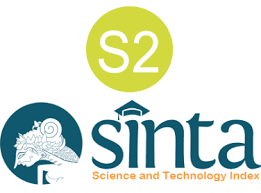Ekspor Revolusi Islam dan Identitas Republik Islam Iran
Abstract
Having been considered as rational actor acting based on national interests, sovereign states is also understood have their own identities. Moreover, state identities have pivotal role on determining state behavior in international social structure. Stand on that assumption, this paper will describe the four state identities of Islamic Republic of Iran that assist to find an answer for interesting question: why did Iran export their Islamic Revolution throughout Middle East during Ayatollah Khomeini’s era (1979-1989)?During export of revolution, Iran was in war with Iraq and ideologically conflicted with Saudi while its fundamental ideology was spread across by propagating via international radio network and supporting oppressed nations in some countries. This historical phenomenon will be explained by Constructivism in International Relations, especially based on Alexander Wendt’s Social Theory of International Politics. It can be seen that there are four identities of Iran: as an Islamic Iran nation, velayat-e faqih-based Islamic Republic, core of Islamic world, and part of Pan-Islam.
Full Text:
PDFReferences
Abrahamian, Ervand.A History of Modern Iran. Cambridge: Cambridge University Press, 2008.
Arjomand, Said Amir. After Khomeini: Iran under His Successors. New York: Oxford University Press, 2009.
Dehshiri, Muhammad Rida. “Ways of Attainining the Ideal International Order from Imam Khomeini’s Viewpoint.” In Imam Khomeini and the International System, translated by Mansoor Limba, 51-70.Teheran: The Institute for Compilation and Publication of Imam Khomeini’s Works, 2005.
Halliday, Fred. Revolution and World Politics: The Rise and Fall of the Sixth Great Power. Durham: Duke University Pressm 1999.
---------------. “The Sixth Great Power: on the Study of Revolution and International Relations.”Review of International Studies, 16/3 (1990): 207-221.
Hinnebusch, Raymond. The International Politics of the Middle East. Manchester: Manchester University Press, 2003.
Katzman, Kenneth. “Iran’s Foreign Policy.”Congressional Research Service. (2016): 1-36.
Khomeini, Ayatollah. Islam and Revolution: Writing and Declarations of Imam Khomeini (Hokumat-i Islam: Velayat-e Faqih). Translated by Hamid Algar. Berkeley: Mizan Press, 1981.
---------------.Sahifeh-ye Imam: An Anthology of Imam Khomeini’s Speeches, Messages, Interviews, Decrees, Religious Permissions, and Letters, vol. 12. Tehran: The Institute for Compilation and Publication of Imam Khomeini’s Works, 2008.
Marschall, Christin. Iran’s Persian Gulf Policy: From Khomeini to Khatami. London: Routledge, 2003.
Muhammad, Simela Victor. “Krisis Hubungan Arab Saudi-Iran.”Info Singkat Hubungan Internasional VIII, no. 01. (2016): 5-8.
Pahlavi, Pierre. “Understanding Iran’s Media Diplomacy.” Israel Journal of Foreign Affairs, vol. 6, no. 2 (2012): 21-33.
Panah, Maryam. The Islamic Republic and the World: Global Dimensions of the Iranian Revolution.London: Pluto Press, 2007.
Schmidt, Soren. “The Role of Religion in Politics: The Case of Shia-Islamism in Iraq.” Nordic Journal of Religion and Society, vol. 22, no. 2 (2009): 123-143.
Wendt, Alexander. Social Theory of International Politics. Cambridge: Cambridge University Press, 2003.
---------------.“Collective Identity Formation and the International State.”The American Political Science Review, vol. 88, no. 2 (June, 1994): 384-396.
Yarshater, Ehsan, ed. Encyclopaedia Iranica, vol. X. California: Mazda Publisher, 2001.
Refbacks
- There are currently no refbacks.










